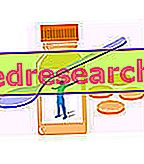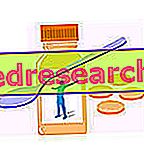EVOLUTION OF THE ODIERNO CONCEPT OF "MEDICATION"
The Greeks were the first scholars of the natural sciences, along with the contemporary Arab civilization. The first pharmacognostes and scholars of natural medicaments were the "rhizotomes" or root collectors; they were great Greek scholars who joined great figures like Homer, Hippocrates and Galen. They knew the natural sources and their properties, they were nomadic figures and not yet structured within a scientific culture like that of Hippocrates. Just then the Pharmacognosy takes its origin as a discipline that tends to structure all the sources in culture of the natural drug.
The figures like Hippocrates tried to add a particular pathology to the properties of a source, so as to systematize and pragmatically concretize the use of a plant product against a disease. This cataloging of natural sources was followed over the decades and has come down to the present day. The historical period that plays a key role in the modern interpretation of medicament is the Middle Ages, according to many a period of obscurantism, but not for the Arab civilizations, which have gathered the Greek-Roman heritage by transferring all their knowledge to the first libraries and university. The first medical facilities and those dedicated to learning medical culture are born in the Arab world; these structures will be resumed in the western world only in the Renaissance, when, with the discovery of the Americas, there was the need to understand these cultures and adapt them to the western one.
At the beginning of the Renaissance the first FARMACOPEAS are born: the manuals that list all the medicines, indicating: the way of use, the source according to the binomial nomenclature Linneana, the part of source with health properties and the treatment of the source so that it preserves the properties and the original quality. Pharmacopoeias contained the medical knowledge of that period; even today there is an official national pharmacopoeia, which reflects the traditions and discoveries of a society. The FUI ( Italian Official Pharmacopoeia ) is the one that among the European pharmacopoeias has more plant sources, a little over a hundred; the FUE (European Official Pharmacopoeia) has fully embraced the Italian one. The pharmacopoeia is a tool for the medicament specialist, which contains information aspects sufficient to meet the needs of different specialists, be they pharmacists and / or herbalists.
The Renaissance marks an essential turning point for the discovery of new medicines; the new world contains several rain forests such as the Amazon, still an important source of natural sources. In this period the figure of the " apothecary " is born, he who knew all the vegetable sources, who increasingly takes distances from the medical figure; distances that were necessarily established when the number of natural sources to know increased significantly. The apothecary has evolved to today's figures of pharmacist, herbalist and promoter of wellness .
The explosion of knowledge on plant sources with health properties led scholars to preserve them, so that the sources, local or imported from America and not only, kept their health properties intact. The pharmacopoeias took the form of botanical archives to maintain and pass on the knowledge of the sources, which were designed in a very detailed way and re-cultivated in Europe in botanical gardens. Botanical gardens were living catalogs for medicinal plants, which could thus be studied and employed.



